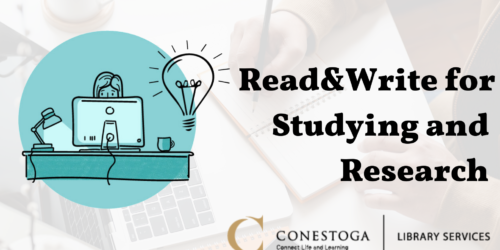Trauma Informed Teaching
As we begin our teaching each semester, we welcome strangers into our class whose past experiences are unknown to us. Over time, it sometimes becomes clear that a student is struggling with the impact of life experiences on the student’s ability to learn. Surprisingly, there is not much published research yet on effective trauma-based teaching practices for a post-secondary environment, but the discussion is beginning. This teaching tip will provide a research perspective and practical suggestions to help make your class, regardless of teaching mode, a welcoming environment for students with trauma in their past (or present).
Three Perspectives on Trauma in the Classroom
Trauma and Learning: Impacts and Strategies for Adult Classroom Success (Johnson, 2018)
- While firm evidence is still lacking, studies have begun to show a correspondence between trauma and later learning difficulties. As ESL educator Rachel Johnson explains based on Yehuda et al. (2015, in Johnson, 2018), “traumatic stress can have a negative impact on brain networks that monitor and enforce attention control, such as the salience network, which allows humans to determine what stimuli to focus on; the default mode network, which helps with self-regulation; and the central executive network, which is critical for controlling thoughts, emotions and behaviors” (par. 6).
- Trauma can negatively impact memory as well. Past trauma can impact storage and subsequent retrieval of both declarative and procedural memory.
- How might the effects of trauma appear in a learning environment? In other words, how might trauma affect the way students behave? There are two possibilities for students who have had to over-use their flight-fight-or-freeze response:
- Hyper-arousal: “… individuals exposed to trauma may be well outside normal range, with an increased sympathetic system response, leading to high anxiety, panic, exaggerated startle reflexes, restlessness, digestive problems, sleeplessness, and rage” (Johnson, 2018, par. 9).
- What range of behaviours in students might indicate hyper-arousal? How might these symptoms impact learning?
- Hypo-arousal: “Conversely, individuals exposed to trauma can also get stuck below the normal healthy range of the autonomic nervous system, with an increased parasympathetic response, resulting in depression, exhaustion, disconnection, and inability to express emotions” (Johnson, 2018, par. 9).
- Have you noticed students struggling within this range? Would these symptoms be noticeable? How would they impact learning?
- Hyper-arousal: “… individuals exposed to trauma may be well outside normal range, with an increased sympathetic system response, leading to high anxiety, panic, exaggerated startle reflexes, restlessness, digestive problems, sleeplessness, and rage” (Johnson, 2018, par. 9).
- As evidence-based research on effective trauma-informed teaching practices in post-secondary classes is still lacking, Johnson turns to evidence from research on learning after traumatic brain injury for suggestions, which we will share below.
Practicing What We Teach: Trauma-Informed Educational Practice (Carello & Butler, 2015)
- What does trauma-informed teaching mean? According to Carello and Butler, “To be trauma-informed, in any context, is to understand the ways in which violence, victimization, and other traumatic experiences may have impacted the lives of the individuals involved and to apply that understanding to the design of systems and provision of services so they accommodate trauma survivors’ needs and are consonant with healing and recovery” (2015, p. 264).
- Carello and Butler suggest five principles for trauma-informed practices: “ensuring safety, establishing trustworthiness, maximizing choice, maximizing collaboration, and prioritizing empowerment” (Fallot and Harris, 2009, as cited in Carello & Butler, 2015). The most fundamental principle is the first one.
- Their research into trauma-informed educational practice for educating social workers led to a list of practices which will be incorporated into our suggestions below.
Strategies for Trauma-Informed Distance Learning (Pate, 2020)
- Christine Pate, whose audience is teachers of younger learners, employs neuroscientist Bruce Perry’s “3R’s” – Regulate, Relate, and Reason – to identify best practices for remote learning. Given that stressed or fearful students have more difficulty learning, the idea is to
- help students to self-regulate through creating a safe, stable environment (focus on the hindbrain),
- provide opportunities for emotional connectedness (focus on the midbrain), in order to…
- prepare students to engage the forebrain in meaningful opportunities for learning.
A perspective from Conestoga’s Counselling Services
Melissa DeNoble and Comfort Afari from Counselling Services identify three broad areas to support students (or colleagues) who may have lived trauma experience with ongoing effects:
- establish safety in the class,
- provide clear expectations, and
- provide choice in learning modalities and activities.
They further remind anyone who wishes to be trauma sensitive to respect the need and right for students to make their own decisions. A practical example is the decision for students to turn on or leave off their cameras in an online synchronous setting.
Further, DeNoble and Afari remind faculty not to try to take the place of a counselor in students’ lives. Be sensitive to what students may be experiencing, but if you feel intervention is needed, please refer to Counselling Services.
Practical Suggestions for Faculty
We will use Perry’s (2006) 3 R’s to provide some suggestions that are relatable to any learning mode.
Regulate
- Begin lessons with simple activities to help students ground themselves (e.g. take 3 to 5 deep breaths, do stretching exercises, look around and identify something that gives joy…). (Johnson, 2018; Pate, 2020)
- Provide structure and consistency to the learning environment (e.g. add events to the eConestoga calendar, provide a weekly list of learning activities, structure each week’s learning materials in a similar way). (Pate, 2020; Perry, 2006)
- Communicate regularly in a similar way (e.g. post a weekly announcement at the same time each week, clearly state when you will check your emails and respond). (Pate, 2020)
- Provide breaks during learning sessions. (Pate, 2020)
- Encourage self-care (e.g. encourage students to go outside and walk or to listen to their favourite music during the break). (Carello & Butler, 2015; Pate, 2020)
- Provide choices so that students can self-regulate according to their own learning styles, preferences and needs (e.g. offer both auditory and visual options for learning, offer options for how students can offer up their ideas, offer alternative formats for some assignments). (Pate, 2020; Carello & Butler, 2015)
- Note that too much choice may be overwhelming for some students. (Carello & Butler, 2015)
- Practice self-care for yourself as an educator. (Carello & Butler, 2015)
Relate
- Don’t judge student behaviours too quickly. For example, silence or lack of active participation may be motivated by different stressors in students’ lives. Give yourself room to respond rather than react. (Pate, 2020)
- Greet students by name and try warm-ups that give them a chance to interact. These do not need to take up a lot of time at the beginning of a lesson. (Pate, 2020) It could be as simple as asking students to share their favourite food either in a phrase or with a link to a photo.
- Plan for interaction – work at making breakout activities concrete and engaging. (Pate, 2020)
- Provide opportunities for students to reach out through office hours or discussion forum opportunities. (Pate, 2020)
- Avoid showing frustration with students who are struggling. Use neutral language and a strengths-based approach to communication with students. (Carello & Butler, 2015; Perry, 2006)
- Establish and maintain boundaries for your own benefit as well as for the benefit of the student. (Carello & Butler, 2015)
- Let students know how to access support appropriate to their location and their program. (Pate, 2020)
Reason
- Divide the learning into manageable chunks with opportunities to process in between. (Pate, 2020)
- Give students time to process information. (Johnson, 2018; Pate, 2020)
- Give clear instructions for tasks, preferably in both visual and auditory format. (Johnson, 2018; Pate, 2020)
- Avoid learning materials, topics or assignments with violent words, images or messages. If potentially disturbing material must be used, explain in advance what students will be seeing/experiencing. (Carello & Butler, 2015; Pate, 2020)
- Provide an opportunity for a “pass” if there are segments of a lesson that a student self-selects not to participate in. (Carello & Butler, 2015)
- Conduct periodic check-ins which invite but don’t force students to share how they are doing if you are teaching difficult material. Provide opportunities to discuss difficult material. This “allows students to process, reorient, and regain emotional distance.” (Carello & Butler 2015, p. 270)
- Be ready to be flexible with assignment due dates if you notice that students are struggling. (Carello & Butler, 2015)
- Offer to look at drafts before a final assignment is turned in to let students know if they are on the right track. (Carello & Butler, 2015)
- Use attention tasks to help train students’ attention to healthy levels (e.g. ask comprehension questions as you teach, have students listen for particular information and raise their hands (virtually or in-person) when they hear it, add activities such as a quick quiz or poll). (Johnson, 2018)
- Minimize guessing so that the wrong answer doesn’t get stuck in a student’s head. (Johnson, 2018)
Would you like to read more on this topic? Trauma-Informed Practices for Postsecondary Education: A Guide provides a comprehensive discussion.
Would you like to refer a student for support? Find out more information at the Student Success Services Faculty page.
References
Carello, J., & Butler, L. D. (2015). Practicing what we teach: Trauma-informed educational practice. Journal of Teaching in Social Work, 35(3), 262–278. https://doi.org/10.1080/08841233.2015.1030059
Johnson, R. (2018). Trauma and learning: Impacts and strategies for adult classroom success. MinneTESOL Journal 34(2), 1-8. Retrieved from http://minnetesoljournal.org/journal-archive/mtj-2018-2/trauma-and-learning-impacts-and-strategies-for-adult-classroom-success/
Pate, C. (2020). Strategies for trauma-Informed distance learning. WestEd.
Perry, B. D. (2006). Fear and learning: Trauma-related factors in the adult education process. New Directions for Adult and Continuing Education, 2006 (110), 21–27. https://doi.org/10.1002/ace.215



